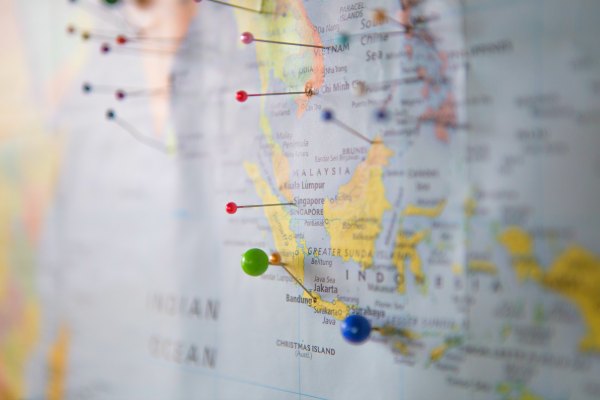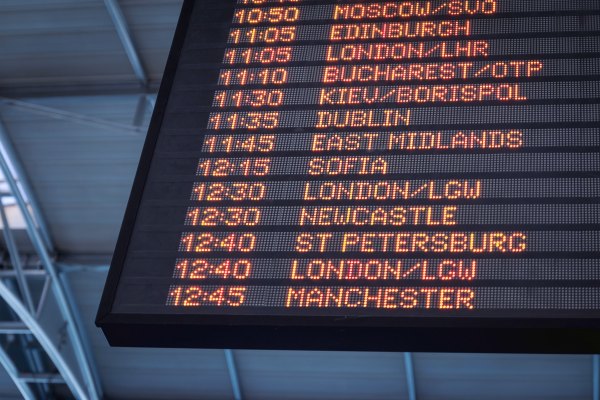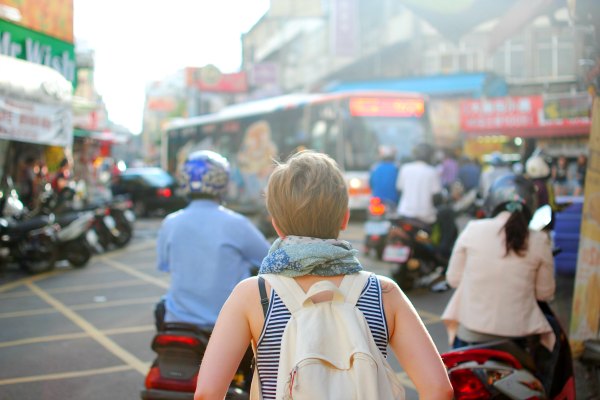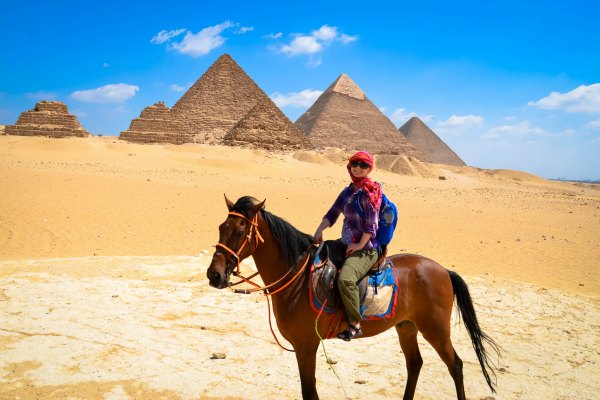Traveling around the world is an amazing experience. Taking 4 plus weeks to explore different cultures and numerous countries provides an unforgettable view of the world and offers a new appreciation of different peoples and cultures.
TL;DR
Check out 16 top expert planned round-the-world trips!
Or speak to an expert for help crafting a custom trip.
Like to do the work yourself and reading long articles?
Read on...
How does one plan for a round-the-world trip? There are many factors to consider, and we’re here to help you break it down so you can be prepared for the trip of a lifetime.
How to plan a trip around the world
- Plan for a month or more at least
- Buy a RTW plane ticket for the most cost cutting option
- Stay in hostels or local hotels
- Pack light! Avoid bringing too many shoes and pack lightweight breathable layers
- Utilize travel blogs for planning tips and research - blogger interview
- TL;DR - See 16 top expert planned round-the-world travel packages
![]()
1. Plan to be gone a month or more at least
One of the first things you’ll want to figure out is how long you are allotting for this trip. It will determine where you go, and how much time to spend in each destination. For any around the the world trip, you have to have at least 4 weeks, and ideally more, available to make it worthwhile.
The 1 month around the world trip
With 1 month, it’s a good idea to stick to a broad region (such as South America, Oceania, or Europe and North Africa). This can be a great way to gain insights into countries that might seem disparate today. But their pasts are intertwined by virtue of their short distance from each other.

For example, Spain is very European in many cultural aspects, but its proximity to North Africa provides fascinating nuances throughout the southern regions, in things like cuisine and architecture. Or consider the similarities between Hawaiian, Fijian, and New Zealand native traditions, and the differences they display to Australian Aborigines.
But even confined within a specified region, a month long journey is going to feel rushed if you’re trying to see multiple countries.
The 2 plus month around the world trip
A more relaxing way to travel around the world is to plan two plus months of travel.
This will allow you to spend more time exploring beyond the tourist sites and visit many more countries in different regions around the globe. Your route will be somewhat dependent on how you decide to travel, flight schedules and routes.
Go anywhere, not everywhere

One of the biggest pitfalls of planning your dream trip around the world is trying to do too much, even if you do plan for 6 months to a year. This idea of “country counting” might seem appealing at first, but it will quickly become exhausting.
Especially as you won’t be allowing yourself to really get immersed in any one culture, and you’re limiting the amount of time you have to see both the most exciting tourist attractions and get a more local feel.
Allowing yourself the freedom and flexibility to change plans if a country deserves more time is one of the best around the world travel tips. And start your planning with the idea that you can go anywhere, but once you try to go everywhere you’ll find yourself in trouble of over planning and ultimately feeling more stressed than you need to be.
2. How much does it cost to travel around the world?
![]()
The cost of a trip like this is largely dependent on how you prefer to travel, and where you go. Most sources agree that the flight planning is the biggest cost eater, as is often the case with travel in general. But there are some tips and tricks you can use for making your trip around the world as cost efficient as possible.
1. Buy a RTW (round the world) ticket
Some airlines offer a packaged Round the World ticket that bundles all your travel together. Two popular options are Star Alliance and Oneworld.
There are some quirks to booking a ticket like this - such as only being able to travel in one direction, either eastward or westward. Additionally Round the World Tickets through the airlines are only available once you have a certain amount of miles. So if you are already a frequent traveler with a Star Alliance airline or the airlines with Oneworld, this option will be cost cutting.

Booking a series of one way flights can add up quick. But if you’re diligent about price checking, and are flexible about airports this can be a good option. And if you want to take it a step further, stick to one airline as much as possible, rack up those miles, and then cash it in the next time!
2. Avoid more expensive destinations
Traveling around the world offers a unique opportunity to travel farther and wider than a typical two week vacation.
Consider spending a majority of time away from Western European countries, the UK, and large cities where costs will be much higher. Avoid tourist areas for shopping and food, and if possible be selective about which sites and museums you buy entrance tickets to.

3. Use a travel agent
Rather than trying to do all the research yourself and getting discourage, speak with a trusted travel agent who can help you plan an itinerary. They’ll listen to your budget and be able to make informed, relevant suggestions based on that based on your interests.
The expertise of an agent can be a lifesaver as you try to plan and get the details in place. Their time isn’t necessarily cheap, but you’ll have the peace of mind knowing your dream trip is in good hands. Plus they’ll be an available touchpoint along the way for help when unexpected situations arise.
Speak to an agent about a custom trip...
4. Don't forget about visas!
It can be easy to forget as you begin to plan your round the world trip that some countries have specific entry requirements. Be sure to check well in advance because visas can take time and are an extra expense. If you’d rather not incur this expense check your route and see if it’s possible to eliminate any countries that require visas.
3. Stay in hostels or local hotels

Possibly the second biggest expense you’ll encounter on an extended travel journey is in booking accommodations. But you may be surprised at how little comfort you have to sacrifice when finding affordable places to stay.
Of course, if you insist on staying in large hotels this will significantly increase the cost of your trip. But hostels, couchsurfing, AirBnB, or even small local hotels are available in a wide range of prices and comfortability.
Hostels are not all created equal however, so be sure to do your research and use a trusted source like Hostel World or TripAdvisor to find reputable accommodations.

If you don’t know the area, try to find hostels or small local hotels that host events or offer day tours can be a great way to cut costs and time in the planning stage. It’s also a great way to meet people on the road!
The logistics of planning transportation plus lodging and making sure everything lines up, especially when you’ve never been somewhere can be exhausting. (You just KNOW it can’t be as simple as it looks on the map…).
If you’re running into panic mode, consider looking at cruises or train travel for significant legs of your trip. This will give you some breathing room, allow you to unpack and air out, do laundry, and not have to worry about schlepping a suitcase of heavy backpack around. Plus some meals are usually included in your ticket price, so you’ll be saving some money!
4. What to pack for a trip around the world

Packing for any extended trip is a feat, let alone packing to be gone for a few months to a year. There are some key things to remember to make your trip as easy as possible.
1. Dress like a local
Pay close attention to the dress norms in the countries you’re traveling to, especially if you’re traveling in the middle east. Conservative clothing is necessary in many Middle Eastern countries to avoid unwanted attention, and also to be respectful of the culture. Women, be sure to pack something to cover your head as this is advised dress code in many muslim countries.
2. Dress appropriately
Additionally, if you plan on visiting churches or other religious establishments, bare shoulders, shorts, and sometimes open toed shoes are typically not permitted.

3. Layers!
It might be an obvious tip for even the most inexperienced traveler, but it really bears repeating, as even this author sometimes forgets the beauty of layers.
You’ll be living out of the same suitcase for an extended period so light, breathable layers are going to be your best friend. Also try to avoid cotton as it gets heavy and absorbent, and will become especially uncomfortable if you are in a rainy or humid environment.
4. Consider what takes up the most space
For most people this means shoes. Limit yourself to no more than three pairs. Don’t bring just one because your feet will get tired and sore, and switching up footwear regularly is a quick hack to give your feet a rest.
Also, your feet will thank you for support - resist the temptation to save space by bringing flimsy shoes. If you enjoy hiking, sacrifice some space for a good pair of tennis shoes or hiking boots.
5. Think about the weather and time of year

Another major suitcase space sucker is warm clothes. Will it be winter in some countries? If you need a coat, scarf, and gloves, be cognisant of the space they take up. Try going to an outdoor store and finding thermal layers that preserve heat, rather than trying to stuff a down jacket in your suitcase.
6. Use packing cubes to keep organized
If you’re like me, once you’ve been on the road for a little bit, your suitcase is going to have an organized chaos look to it, except without the organization part. Packing cubes are a great way to keep clothes, toiletries, and other random suitcase items separated and easily reachable. This is also extremely helpful for going through customs and security at the airport.
7. Don't overpack
You’ll be in enough areas where you can purchase things if you forgot something, and you can do laundry at most hostels and hotels. And plus, you have to save some room for souvenirs!
5. Planning a Solo Around the World Trip - Interview with Travel Blogger Kirsten Smith

Photo courtesy of Kirsten Smith, Wallflower Wanderer ©
To get a “real world” insight into someone who has actually planned a full trip around the world completely ad hoc, we spoke with Kirsten Smith. Kirsten is a freelance marketing copywriter, photographer and travel blogger based in San Francisco.
In 2015, she quit her perfectly decent desk job to travel for a year — she's seen pyramids, coral reefs, deserts, rain forests, ruins, medieval cities, and Mt. Everest — and much, much more.
You can read more about Kirsten's experiences on her blog: Wallflower Wanderer
Interview with Kirsten Smith
Stride: How difficult was it to plan an around the world trip on your own?
Kirsten: Because I quit my job and gave myself an entire YEAR to travel (instead of only a couple of weeks for my typical vacation), I wanted to be spontaneous, and not plan too much in advance. I got my plane ticket and lodging for the first location, which was Barcelona — then I basically winged it from there. Before leaving, I had talked to friends about meeting up in various global locations along the way, which created a loose agenda, but didn't dictate each day.
Stride: What online sources, if any, did you find the most helpful?
Kirsten: For lodging I used Airbnb, Hotels.com, and would definitely recommend HostelWorld which is mentioned previously. For transit help I used Rome2Rio, SkyScanner, and Google Flights.
To get advice on destinations, such as sample itineraries and important information I used Frommers, Lonely Planet, and of course Trip Advisor. I also found travel blogs like Adventurous Kate to be extremely useful for tips about being a solo female traveler.
Because I did use tours during some of my trip, I defintely found the compare tools on Stride helpful when I wanted a longer excursion. Viator was my go-to for short day trips, as well as local tours via the hostels.

Stride: Was safety a concern in traveling on your own?
Kirsten: For sure, especially as a petite woman. I knew that if anything bad happened, I'd pretty much be on my own to handle it — so I did a lot of small things to keep myself safe, including:
1) Trying not to draw the wrong kind of attention to myself. I dressed fairly conservatively in long shorts and pants, and I covered my arms and legs in countries where that's part of the culture. I didn't wear jewelry or makeup, and I kept my camera in my backpack unless I planned to use it.
2) I always tried to keep my wits about me, so I rarely went out drinking unless I was with my friends or other travelers (safety in numbers!)
3) My money and credit cards were always split up between my purse or backpack and hidden in my luggage locked up at the hostel, along with my passport. I also turned my bags to my front on crowded transportation.
Fortunately, I was never mugged, pick-pocketed or assaulted during my year of travel. I listened to my gut, researched where the sketchy areas were, and just tried not to do anything dumb in general, lol.

Photo courtesy of Kirsten Smith, Wallflower Wanderer ©
Stride: Do you think taking a guided trip is a good option for this kind of trip?
Kristen: Totally. I did several guided tours throughout the year, including a camel ride into the Sahara Desert in Morocco, a 3-day hike into the mountains of northern Vietnam, and tours through the Galapagos Islands.
I'm glad I did them especially in places where I knew there would be a tricky language barrier. Plus, when you're with a guide who knows the area, you know you're going to see the good stuff. Sometimes it's really nice not having to constantly think and stress.
Stride: What were the biggest challenges you faced in planning and on the ground?
Kirsten: Well, I have a terrible sense of direction. I'm honestly amazed I'm not still wandering around India somewhere. So, transit logistics and getting myself around new cities was one of my most common challenges. I used offline maps when I could, but even those weren't all that helpful in less-traveled areas.
I might book an Airbnb, but getting myself TO the place could be a real nightmare. That was the case in Kathmandu, Nepal, when I arrived after dark and I was useless in helping the taxi driver find the homestay among twisting unmarked dirt streets — my host finally had to come fetch me on his motorcycle, which was pretty...interesting.

Photo courtesy of Kirsten Smith, Wallflower Wanderer ©
Stride: What was the best part of planning this trip by yourself?
Kirsten: Being able to go virtually anywhere I wanted in the world, for however long I wanted — I'd never had that kind of freedom before. I traveled on a super small budget, but splurged now and then on experiences I knew I'd never forget as long as I live.
Sitting in a cafe on a beautiful beach and asking myself, "Where to next?" and then simply going there, and realizing there's nothing I can't handle when I get there. Whatever happens, I'll figure it out. I'll make new friends, I'll eat good food, I'll see incredible things. It's an awesome feeling.
Top Packaged and Expert Planned Around the World Tours

Hate planning and don’t want to miss anything?
Browse this list of top Around the World Tours. You’ll lose some freedom to choose where to go and if you want to stay longer or leave sooner, it’s true.
But you’ll gain so much more in the time you save stressing about making sure all the i’s are dotted and t’s crossed. Let the tour operator do that and get ready to dive into the amazing world we live in with amazing guides, and meet fellow travelers and friends for life.

